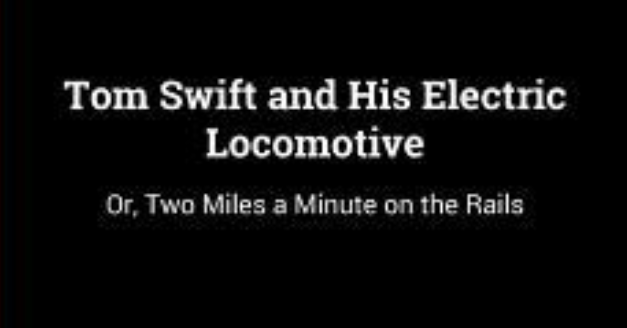CHAPTER XVIII — Tom Swift and His Electric Locomotive
byCHAPTER XVIII – Tom Swift and His Electric Locomotive opens in the wake of a three-hour delay caused by a wreck along the transcontinental line—an incident that very nearly placed the Hercules 0001 at risk. Though the locomotive itself remained untouched, Tom Swift’s instincts are alert. He and Ned Newton spot familiar figures near the crash site—namely Andy O’Malley and Montagne Lewis, whose prior sabotage attempts have earned them notoriety. O’Malley’s abrupt disappearance upon being recognized confirms their suspicions. Tom sees the timing of their presence as too convenient to be coincidence. The incident doesn’t just delay progress—it reinforces that someone is working actively against them.
Arriving at Hendrickton, Tom and Ned are welcomed by Mr. Richard Bartholomew, the president of the Hendrickton & Pas Alos Railroad. His interest in the electric locomotive is more than curiosity—it’s driven by the need for performance innovation in a competitive transport landscape. Bartholomew believes in Tom’s capability but wants proof. He dreams of trains traveling at two miles per minute, a feat which only the Hercules 0001 might achieve. Tom, though confident, knows such expectations require precision. The machine must not only reach unprecedented speeds but also handle steep grades and long distances without fail. Tom outlines the tests planned through the Pas Alos Range—terrain that has challenged steam power for years.
The preparation phase brings together skill, strategy, and camaraderie. Ned assists with logistics while Koku, Tom’s towering aide, provides strength and levity. Koku’s enthusiasm is unmatched, even if his grasp of engineering is loose. As the test day nears, engineers, brakemen, and firemen from the H. & P. A. line collaborate with Tom to ensure every bolt and contact is ready. Safety is paramount, not just for passengers but also for the locomotive’s reputation. The Hercules 0001 symbolizes more than metal—it carries Tom’s vision for the future of rail. Among the crew, there’s a shared curiosity: Can electricity truly outperform steam in real-world rail conditions?
Tom walks the length of the engine, checking cables, cooling systems, and control levers. Discussions between him and the H. & P. A. engineers touch on friction resistance, regenerative braking, and sustained output over grade. For many, this is their first time working with an electric locomotive of this scale. Skepticism lingers in small remarks, but Tom engages each question with data and diagrams. It’s not arrogance that drives him—it’s assurance backed by testing. Yet in the back of his mind, the recent sabotage attempt casts a shadow. He stations extra guards near the switches and alerts his team to watch for unusual activity.
The actual test run begins with cautious optimism. The Hercules 0001 pulls out from the terminal smoothly, its hum replacing the roar of steam. Its acceleration is fast but stable. Onlookers along the route track its speed with stopwatches, while Bartholomew observes from a trailing coach. As they climb the first incline of the Pas Alos Range, Tom monitors power draw and wheel torque. Everything stays within limits. The locomotive doesn’t just meet expectations—it begins to exceed them. At one point, they near the two-miles-a-minute mark. Ned cheers, and even the seasoned rail crew exchange surprised looks.
Still, Tom keeps his focus on performance under pressure. He wants to know how Hercules 0001 will behave after long stretches and steep climbs. Can the power unit cool efficiently? Will the traction hold on the tighter curves ahead? He watches each metric, noting minor adjustments for future refinements. Koku, meanwhile, stands guard at the rear of the train, still on alert after O’Malley’s reappearance. Tom has instructed him to signal if anything unusual happens. The past has taught them that innovation often invites interference.
As the chapter closes, the locomotive continues its trial deep into the range. The pace remains steady. Bartholomew, increasingly impressed, remarks that this may be the turning point for his railroad. Tom says little in return. He’s not ready to celebrate. Success must be proven not just in one run, but consistently—and safely. The journey isn’t just about speed. It’s about endurance, reliability, and gaining the trust of those still tied to tradition. Tom knows that if Hercules 0001 can conquer the Pas Alos, it won’t just be a victory for him. It will be a victory for electric propulsion as the future of rail.

